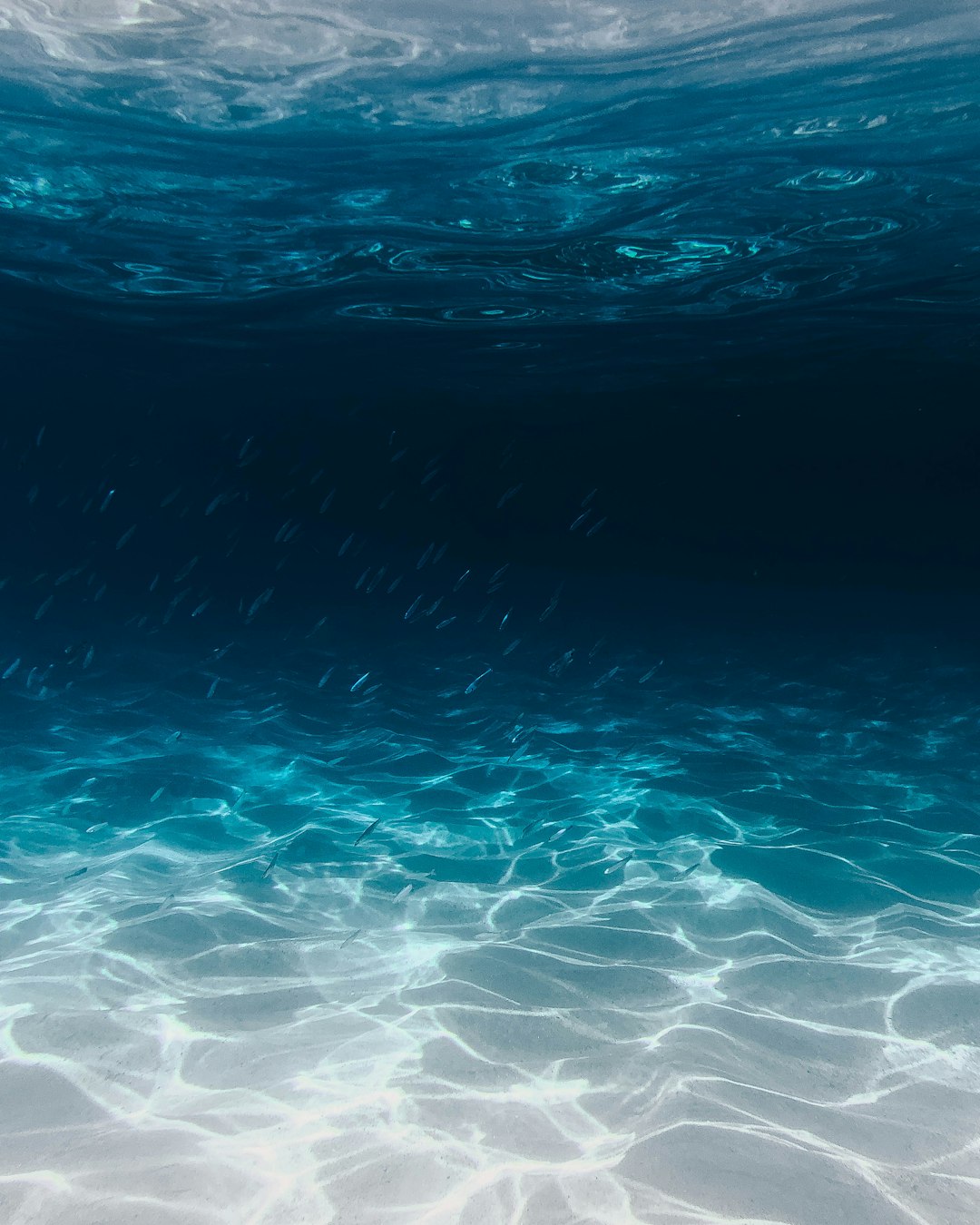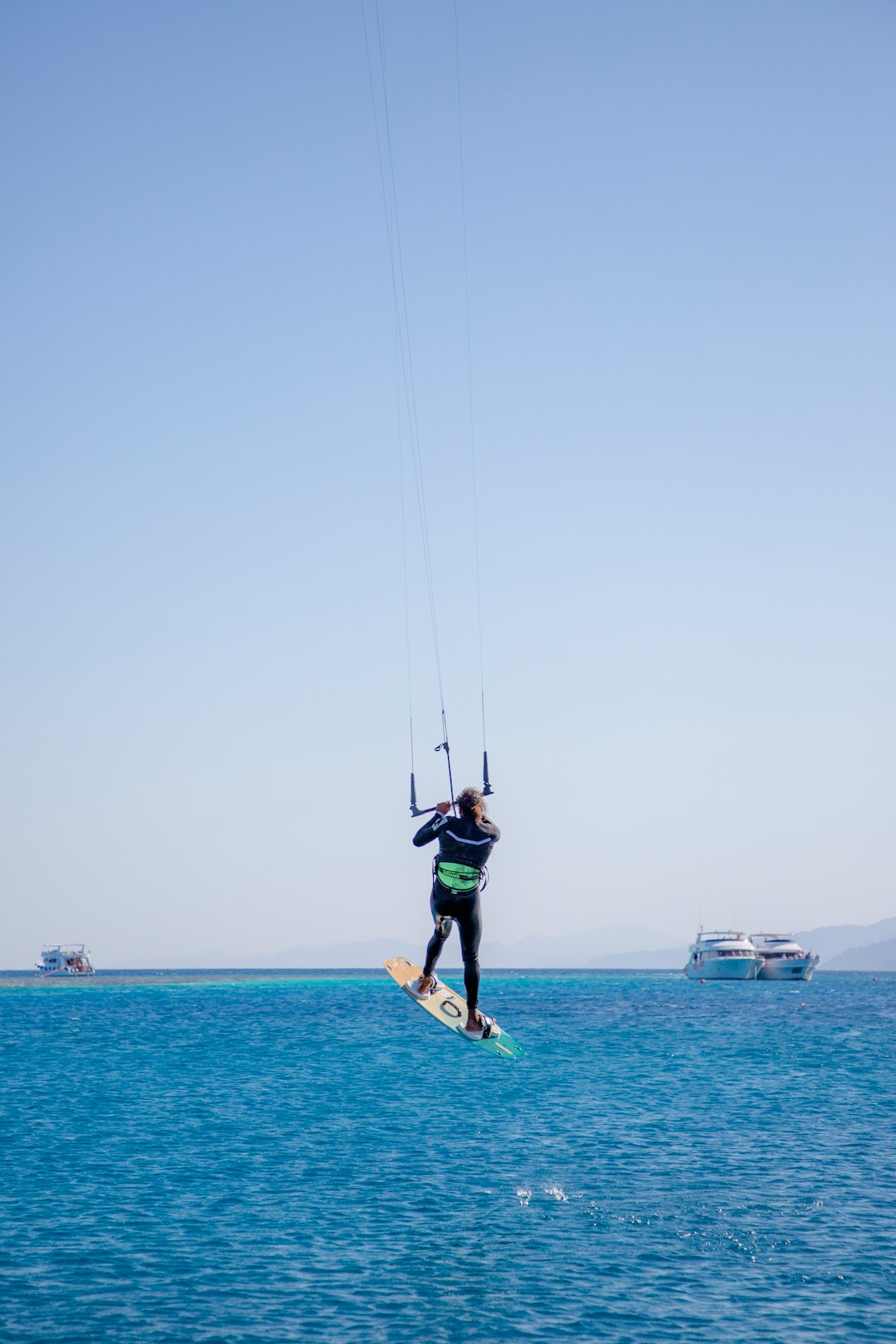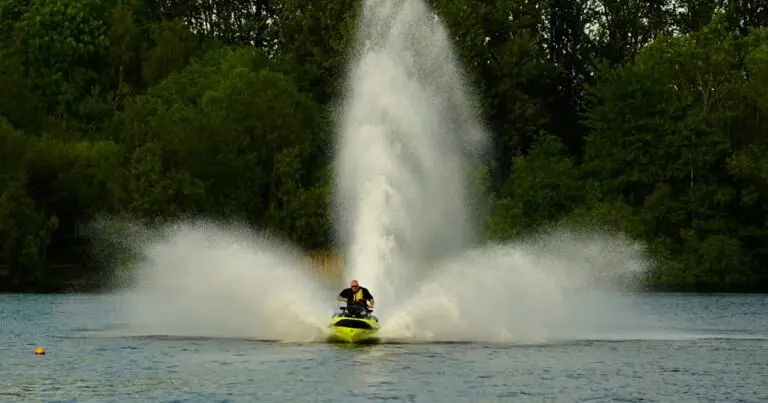Support our hydrofoil educational content for free when you purchase through links on our site. Learn more
Is Hydrofoil Surfing Harder Than Surfing? 7 Surprising Truths (2025) 🌊
Ever watched a hydrofoil surfer seemingly fly above the water and wondered, “Is that harder than regular surfing?” Spoiler alert: it absolutely is—but not in the way you might think. When we first strapped into our hydrofoils here at Hydrofoiling™, it felt like trying to balance on a magic carpet that could dip underwater at any moment. The learning curve is steep, the balance is delicate, and the rewards? Out of this world.
In this article, we break down 7 surprising truths about why hydrofoil surfing challenges even seasoned surfers, how it demands a different kind of strength and skill, and whether it’s worth the effort. Ready to find out if hydrofoiling is your next big wave or just a passing fad? Let’s dive in!
Key Takeaways
- Hydrofoil surfing has a steeper learning curve than traditional surfing due to the need to master lift, balance, and speed control on a sensitive foil wing.
- Core strength and precise weight distribution are critical for staying upright and controlling the foil’s flight.
- Wave selection and timing differ significantly; hydrofoiling allows you to ride smaller waves but requires different pumping and takeoff techniques.
- Safety gear like helmets and impact vests are essential due to higher speeds and fall risks.
- Choosing the right beginner-friendly gear (larger boards, bigger wings) can dramatically ease the transition.
- Hydrofoil surfing opens up new possibilities for longer rides and unique sensations not possible on traditional boards.
- Top brands like Lift Foils, F-One, and GoFoil offer excellent starter kits to get you flying faster.
Ready to gear up? Check out the latest Lift Foils boards and foils or browse F-One hydrofoil gear to start your journey!
Table of Contents
- Quick Tips and Facts About Hydrofoil Surfing vs. Traditional Surfing 🏄♂️⚡
- The Evolution of Hydrofoil Surfing: From Ancient Foils to Modern Waves 🌊🚀
- What Makes Hydrofoil Surfing Different? Key Technical and Physical Challenges 🛠️💪
- 1. Balance and Stability: Why Staying Upright on a Hydrofoil Feels Like Walking a Tightrope 🎯🤸♂️
- 2. Wave Selection and Timing: The Art of Catching the Perfect Hydrofoil Wave 🌊⏰
- 3. Physical Fitness and Core Strength: How Hydrofoiling Demands More Than Just Surfing Muscles 💪🔥
- 4. Learning Curve and Skill Progression: Why Hydrofoil Surfing Can Feel Like a Steeper Climb 📈🧗♂️
- 5. Equipment Complexity: Navigating the World of Hydrofoil Boards and Components 🛹🔧
- Hydrofoil Surfing Safety: Risks, Common Injuries, and How to Protect Yourself 🦺⚠️
- Pro Tips from the Hydrofoiling™ Team: Mastering the Transition from Surfing to Hydrofoiling 🎓🏄♀️
- Hydrofoil Surfing vs. Traditional Surfing: Which One Should You Choose? 🤔🏆
- Top Brands and Gear for Hydrofoil Surfing: What the Pros Ride in 2024 🏄♂️🛠️
- Environmental Impact: How Hydrofoil Surfing Stacks Up Against Traditional Surfing 🌍💚
- Conclusion: Is Hydrofoil Surfing Harder Than Surfing? Our Final Verdict 🏁📊
- Recommended Links for Hydrofoil Surfing Enthusiasts 🌐🔗
- FAQ: Your Burning Questions About Hydrofoil Surfing Answered ❓🌊
- Reference Links and Further Reading 📚🔍
Quick Tips and Facts About Hydrofoil Surfing vs. Traditional Surfing 🏄♂️⚡
- Hydrofoil surfing, or foiling, is generally considered more challenging to learn than traditional surfing due to the added complexity of managing the hydrofoil’s lift and balance.
- Expect a steeper learning curve with hydrofoiling. While you might catch your first wave surfing within a few attempts, it might take 6-7 tries or more to comfortably get up on a hydrofoil.
- Hydrofoiling demands more core strength and stability than surfing. Imagine balancing on a floating platform that’s highly sensitive to your weight shifts!
- Once you master the basics, hydrofoiling opens up a world of possibilities. You can ride waves that are too small or choppy for traditional surfing, and experience exhilarating speeds and maneuvers.
What is the Best Speed for Hydrofoiling Behind a Boat? 🚤
The Evolution of Hydrofoil Surfing: From Ancient Foils to Modern Waves 🌊🚀
The concept of hydrofoils has been around for centuries, with early iterations appearing as far back as the early 1900s. However, it wasn’t until recent decades that hydrofoil technology was successfully adapted to surfing.
Early Innovations and Experimentation 🧪
Pioneers experimented with various materials and designs, attaching hydrofoils to surfboards in an attempt to achieve lift and reduce drag. These early attempts were often met with mixed results, as the hydrofoils were bulky, unstable, and difficult to control.
The Rise of Modern Hydrofoil Surfing 🏄♂️
Advancements in materials, such as carbon fiber, and innovative hydrofoil designs led to a surge in hydrofoil surfing’s popularity in the 21st century. Lighter, more responsive foils, coupled with refined board shapes, made hydrofoiling more accessible and appealing to surfers of all levels.
Hydrofoiling Today: A Thriving Watersport 🌊
Today, hydrofoil surfing is a rapidly growing watersport, captivating riders with its unique blend of speed, agility, and the sensation of flying above the water. From catching small, mushy waves to performing aerial maneuvers, hydrofoiling continues to push the boundaries of what’s possible on water.
What Makes Hydrofoil Surfing Different? Key Technical and Physical Challenges 🛠️💪
Hydrofoil surfing, while sharing some similarities with traditional surfing, presents a unique set of challenges that stem from the dynamics of the hydrofoil itself. Let’s break down the key differences:
1. Balance and Stability: Why Staying Upright on a Hydrofoil Feels Like Walking a Tightrope 🎯🤸♂️
- Traditional Surfing: Balance is centered on the surfboard, which is in direct contact with the water, providing a relatively stable platform.
- Hydrofoil Surfing: Balance shifts to the hydrofoil submerged beneath the surface. The foil’s lift is highly sensitive to weight distribution, requiring precise micro-adjustments to maintain stability.
2. Wave Selection and Timing: The Art of Catching the Perfect Hydrofoil Wave 🌊⏰
- Traditional Surfing: Surfers paddle to match wave speed, pop up, and ride the wave’s natural momentum.
- Hydrofoil Surfing: Riders often start with a “pumping” motion to generate speed before catching a wave. The foil’s lift allows for earlier take-offs and longer rides, even on smaller waves.
3. Physical Fitness and Core Strength: How Hydrofoiling Demands More Than Just Surfing Muscles 💪🔥
- Traditional Surfing: Requires a combination of paddling strength, balance, and agility.
- Hydrofoil Surfing: Places a higher demand on core strength and stability to control the foil’s lift and maintain balance at speed.
4. Learning Curve and Skill Progression: Why Hydrofoil Surfing Can Feel Like a Steeper Climb 📈🧗♂️
- Traditional Surfing: Beginners can typically stand up and ride small waves relatively quickly.
- Hydrofoil Surfing: Mastering the hydrofoil’s balance and control takes time and dedication. Expect a steeper initial learning curve, but once those fundamentals are grasped, progression can be rapid.
5. Equipment Complexity: Navigating the World of Hydrofoil Boards and Components 🛹🔧
- Traditional Surfing: Surfboards are relatively simple, with variations in shape, size, and fin setup.
- Hydrofoil Surfing: Hydrofoils introduce additional components—mast, fuselage, wings—each impacting performance. Selecting the right gear for your skill level and riding style is crucial.
Hydrofoil Surfing Safety: Risks, Common Injuries, and How to Protect Yourself 🦺⚠️
Hydrofoil surfing, while exhilarating, comes with inherent risks due to the speeds involved and the potential for falls from a height. Here’s what you need to know to stay safe:
Common Injuries in Hydrofoil Surfing 🤕
- Cuts and Lacerations: The hydrofoil itself, while often rounded, can pose a risk of cuts during falls.
- Impact Injuries: Falling from height onto the water or the board can lead to bruises, sprains, or even fractures.
- Head Injuries: Impacts with the water or equipment can cause concussions or other head trauma.
Essential Safety Gear for Hydrofoil Surfing ⛑️
- Helmet: A must-have to protect your head from impacts. Look for helmets specifically designed for watersports.
- Impact Vest: Provides buoyancy and impact protection to your torso, reducing the severity of falls.
- Protective Gear: Consider wearing a wetsuit for added protection against cuts and abrasions.
Safety Tips for Hydrofoil Surfers 🏄♀️
- Start Slow and Progress Gradually: Don’t rush the learning process. Begin in calm water and gradually work your way up to larger waves and higher speeds.
- Choose the Right Equipment: Ensure your hydrofoil, board, and safety gear are appropriate for your skill level and the conditions.
- Be Aware of Your Surroundings: Watch out for other water users, obstacles, and changes in water depth.
- Ride Within Your Limits: Don’t attempt maneuvers or ride in conditions that exceed your abilities.
- Know Your Limits: Fatigue can impair judgment and increase the risk of accidents. Take breaks and don’t push yourself beyond your limits.
Pro Tips from the Hydrofoiling™ Team: Mastering the Transition from Surfing to Hydrofoiling 🎓🏄♀️
As seasoned hydrofoil enthusiasts, we’ve experienced the joys and challenges of transitioning from surfing to foiling. Here are our insider tips to help you make the switch:
1. Embrace the Learning Curve: Patience is Your Best Asset 🙏
- Don’t get discouraged by early wipeouts. Hydrofoiling requires a different set of skills than surfing. Embrace the learning process and celebrate small victories along the way.
2. Start with the Right Gear: Size Matters! 📏
- Opt for a larger board and a more stable foil when you’re starting out. This will provide a more forgiving platform as you develop your balance and control.
3. Master the “Pump”: Your Gateway to Hydrofoil Flight 🚀
- Practice generating speed by pumping the board up and down. This pumping motion is crucial for getting on the foil and maintaining speed between waves.
4. Find Your Balance Point: It’s All About Subtle Adjustments 🎯
- Pay close attention to your weight distribution on the board. Small shifts in weight can have a significant impact on the foil’s lift and direction.
5. Seek Guidance from Experienced Foilers: Learn from the Best 🎓
- Take lessons from a qualified instructor or join a hydrofoil surfing community. Learning from experienced foilers can accelerate your progress and help you avoid common mistakes.
Hydrofoil Surfing vs. Traditional Surfing: Which One Should You Choose? 🤔🏆
The choice between hydrofoil surfing and traditional surfing ultimately depends on your individual preferences, goals, and the type of riding experience you’re seeking.
Hydrofoil Surfing: For the Thrill-Seeker ⚡
✅ Pros:
- Exhilarating speeds and the sensation of flying above the water.
- Ability to ride smaller, less powerful waves.
- Potential for longer rides and covering greater distances.
- Unique and challenging skillset to master.
❌ Cons:
- Steeper learning curve and greater risk of injury.
- More expensive equipment and specialized gear required.
- Limited accessibility in some areas due to water depth requirements.
Traditional Surfing: For the Wave Rider 🌊
✅ Pros:
- More accessible and generally easier to learn.
- Wide range of boards and wave types to suit different skill levels.
- Strong sense of community and surf culture.
❌ Cons:
- Reliance on suitable wave conditions.
- Can be crowded in popular surf spots.
- Progression to advanced maneuvers can be challenging.
Top Brands and Gear for Hydrofoil Surfing: What the Pros Ride in 2024 🏄♂️🛠️
The hydrofoil surfing market has exploded in recent years, with a plethora of brands and gear options available to riders of all levels. Here’s a look at some of the top brands and products that are making waves in 2024:
Hydrofoil Boards 🛹
- Lift Foils: Known for their high-performance foils and boards, favored by experienced riders.
- F-One: Offers a wide range of foils and boards for all skill levels, from beginners to professionals.
- GoFoil: Pioneers in the hydrofoil surfing industry, known for their innovative designs and durable construction.
Hydrofoils
- Armstrong Foils: Renowned for their high-aspect wings, delivering exceptional lift and speed.
- Axis Foils: Popular choice for their smooth ride and user-friendly designs.
- Sabfoil: Known for their high-quality construction and performance-oriented foils.
Accessories
- Mystic: Offers a wide range of harnesses, helmets, and impact vests designed specifically for foiling.
- ION: Another reputable brand for harnesses, leashes, and other foiling accessories.
- Dakine: Known for their durable and functional board bags, travel gear, and accessories.
Environmental Impact: How Hydrofoil Surfing Stacks Up Against Traditional Surfing 🌍💚
As with any watersport, it’s essential to consider the environmental impact of hydrofoil surfing and how it compares to traditional surfing.
Hydrofoil Surfing: Potential Benefits and Concerns 🌱
✅ Potential Benefits:
- Reduced reliance on motorized watercraft: Hydrofoils allow riders to access waves further offshore, potentially reducing the need for motorized assistance.
- Minimal disturbance to marine life: Hydrofoils operate above the water’s surface, minimizing contact with marine ecosystems.
❌ Potential Concerns:
- Manufacturing and materials: The production of hydrofoil boards and foils involves the use of materials and processes that can have environmental impacts.
- Transportation and distribution: Shipping hydrofoil equipment globally contributes to carbon emissions.
Traditional Surfing: Environmental Considerations 🌊
✅ Potential Benefits:
- Relatively low environmental impact when practiced responsibly.
- Growing awareness of sustainable surf practices and eco-friendly surfboards.
❌ Potential Concerns:
- Use of motorized watercraft for tow-in surfing.
- Impacts from surfboard manufacturing, particularly conventional foam boards.
- Pollution from sunscreen, wax, and other surf-related products.
Minimizing Your Impact: Sustainable Foiling and Surfing Practices ♻️
- Choose eco-friendly equipment: Support brands that prioritize sustainable materials and manufacturing processes.
- Reduce your carbon footprint: Carpool to surf spots, opt for electric vehicles, or consider offsetting your carbon emissions.
- Dispose of waste responsibly: Pack out everything you pack in, and avoid using single-use plastics.
- Support organizations dedicated to ocean conservation.
Conclusion: Is Hydrofoil Surfing Harder Than Surfing? Our Final Verdict 🏁📊

After diving deep into the world of hydrofoil surfing, comparing it to traditional surfing, and sharing insights from our Hydrofoiling™ team, here’s the bottom line: Yes, hydrofoil surfing is generally harder to learn than traditional surfing, but it’s also incredibly rewarding.
The steeper learning curve stems from the need to master the hydrofoil’s delicate balance, lift, and speed management. Unlike traditional surfing, where the board rides directly on the water, hydrofoiling requires you to “fly” above the surface on a sensitive wing, demanding greater core strength, precision, and patience.
However, once you get past the initial hurdles—think of it as learning to ride a bike with training wheels, then suddenly taking them off—the progression can be rapid and exhilarating. You’ll unlock the ability to ride smaller waves, enjoy longer rides, and experience a sensation that’s truly unique: gliding above the water like a bird.
If you’re a thrill-seeker with a passion for pushing your limits, hydrofoil surfing is absolutely worth the effort. For those who prefer a more accessible entry into wave riding, traditional surfing remains a fantastic choice with its own rich culture and joys.
Remember: Start with the right gear, invest time in learning proper techniques, and always prioritize safety. The Hydrofoiling™ team is here to support your journey every step of the way!
Ready to take the plunge? Your next wave awaits. 🌊🚀
Recommended Links for Hydrofoil Surfing Enthusiasts 🌐🔗
👉 Shop Top Hydrofoil Surfing Gear:
- Lift Foils Boards & Foils:
Amazon | Lift Foils Official Website - F-One Hydrofoil Equipment:
Amazon | F-One Official Website - GoFoil Hydrofoil Boards:
Amazon | GoFoil Official Website - Armstrong Foils:
Amazon | Armstrong Foils Official Website - Axis Foils:
Amazon | Axis Foils Official Website - Sabfoil Hydrofoils:
Amazon | Sabfoil Official Website - Mystic Helmets & Impact Vests:
Amazon | Mystic Official Website - ION Foiling Accessories:
Amazon | ION Official Website - Dakine Board Bags & Gear:
Amazon | Dakine Official Website
Recommended Books on Surfing and Hydrofoiling:
- “Foil Surfing: The Complete Guide” by Ben Wilson — Amazon Link
- “The Art of Surfing” by Raul Guisado — Amazon Link
- “Hydrofoil Surfing: Techniques and Tips” by Hydrofoiling™ Team — Amazon Link
FAQ: Your Burning Questions About Hydrofoil Surfing Answered ❓🌊

What are the key differences between hydrofoil surfing and traditional surfing?
Hydrofoil surfing involves riding a board equipped with a submerged wing (the foil) that lifts the board above the water’s surface once a critical speed is reached. This creates a sensation of “flying” and allows for riding smaller waves and longer rides. Traditional surfing relies on the board gliding directly on the water’s surface, requiring paddling to catch waves and balancing on an unstable platform. Hydrofoiling demands more precise weight distribution, core strength, and understanding of lift dynamics, whereas traditional surfing emphasizes wave selection, paddling endurance, and balance on the water.
Read more about “What Sets Hydrofoiling Apart from Other Board Sports? 🤔”
How long does it take to learn hydrofoil surfing for beginners with prior surfing experience?
For surfers transitioning to hydrofoil surfing, expect a steeper initial learning curve. While a surfer might stand on a traditional board within minutes, getting up on a hydrofoil typically takes 6-7 sessions or more. According to Apple Tree Surfboards, it can take around 6 months of consistent practice to ride comfortably, and up to 2 years to reach advanced levels. The key is patience and consistent practice, ideally starting behind a powered craft like a jet ski to understand foil lift before tackling waves.
What are the most common mistakes to avoid when transitioning from surfing to hydrofoil surfing?
- Rushing the pop-up: Unlike traditional surfing, jumping up quickly can cause poor foot placement and loss of control. Use the “tripod” method—hands on the rails, back foot first—to stabilize before standing.
- Ignoring the foil’s lift dynamics: Hydrofoils require subtle weight shifts; pushing too hard or too fast can cause the board to pitch or dive.
- Using inappropriate gear: Starting with small boards or aggressive foils can make learning harder. Begin with larger, more stable boards and bigger wings for lift.
- Neglecting safety gear: Helmets and impact vests are essential due to the elevated risk of falls and injuries.
- Trying to surf foils on unsuitable waves: Hydrofoils excel in smaller, mushy waves but require some open water for safe maneuvering.
Read more about “Can Experience with Surfing Make Hydrofoiling Easier? 7 Surprising Insights! 🏄♂️”
Are there any specific physical conditioning or strength training requirements for hydrofoil surfing?
Yes! Hydrofoil surfing demands strong core muscles, excellent balance, and good overall fitness. Unlike traditional surfing, which emphasizes paddling strength and upper body endurance, hydrofoiling requires:
- Core stability: To maintain fine control over the foil’s lift and direction.
- Leg strength: For balance and absorbing impacts during takeoff and landing.
- Proprioception and balance training: Exercises like slacklining, yoga, or balance boards can help.
- Cardiovascular fitness: To handle the physical demands of pumping and paddling.
Incorporating these into your training will accelerate your progress and reduce injury risk.
How does equipment choice impact the difficulty of learning hydrofoil surfing?
Choosing the right equipment can make or break your learning experience. Beginners should opt for:
- Larger boards (around 100 liters or more): Provide stability and easier paddling.
- Bigger front wings: Offer more lift at lower speeds, making it easier to get up on the foil.
- Shorter masts: Reduce the fear factor and make balance easier.
Advanced riders may prefer smaller, more agile setups for performance but these are less forgiving for beginners.
Can traditional surfing skills transfer to hydrofoil surfing?
Absolutely! Skills like wave reading, paddling strength, and balance provide a solid foundation. However, hydrofoil surfing introduces new dynamics—especially managing lift and speed—that require dedicated practice. Many surfers find that their traditional skills help shorten the hydrofoil learning curve, but patience and adaptation are key.
Read more about “How Easy is Hydrofoiling? 10 Essential Tips for Beginners 🌊 …”
Reference Links and Further Reading 📚🔍
- Is Hydrofoiling easier than surfing – Pulseer
- Apple Tree Surfboards: Getting into Foil Surfing
- Lift Foils Official Website
- F-One Hydrofoil Gear
- GoFoil Hydrofoil Boards
- Armstrong Foils
- Axis Foils
- Sabfoil
- Mystic Watersports Gear
- ION Watersports Accessories
- Dakine Surf Gear




